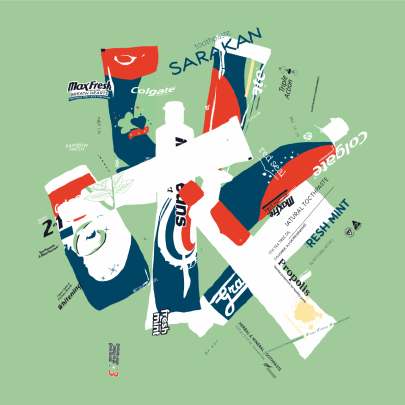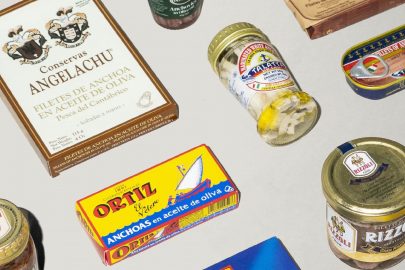Aug 24, 2015 etc

This article first appeared in the October 2013 issue of Metro. Words by Simon Farrell-Green.
One of the perverse things about trying to make everything from scratch is that you end up going to inordinate lengths to make things that are otherwise readily available from the butcher. Like corned beef. You can buy it all nicely corned and ready to go for not very much, and make no mistake it is delicious — and since it lasts through about six meals, pretty cheap. But I’ve always wondered how on earth they get it so red, so I’ve always been a bit suspicious of it. What I really wanted to do was do it myself.
Turns out the answer to the colour question is pickling salt, or sodium nitrate, which is pink and gives corned beef that particular colour and, to an extent, the flavour. I learned this from American food writer Michael Ruhlman, who has an excellent blog (which, among other things, features a different cocktail each Friday) detailing all manner of things: he’s a fellow “from-scratcher”. My kind of cook. When I found his recipe for corned beef, I was ready to give it a go.
It’s incredibly easy. You need to make a pickling spice — you could buy it for cheap in a packet, of course, but where’s the fun in that? Ruhlman’s has many ingredients: black peppercorns, mustard seeds, coriander seeds, hot red pepper flakes, allspice berries, mace, cinnamon sticks, bay leaves, whole cloves and ground ginger. I liked the sound of that; I also liked that I had most of the spices in the cupboard already. I threw in a few cardamom seeds for good measure and set to.
You bash it in a mortar and pestle, then put two tablespoons in about four litres of cold water with 1½ cups of salt and ½ a cup of sugar and… four teaspoons of pickling salt, which I couldn’t find for love nor money.
I pressed on regardless. It’s just salt, right? You heat the brine until the salt and sugar melt, let it cool, transfer it to a large bowl, put in the beef and then leave it in the fridge (I advise the bottom shelf). For five days. My kind of cooking.
My first effort was a disaster. I used a big piece of topside that I got sent in a big packet of meat from Green Meadows Beef — the sheer amount of beef we suddenly possessed was partly what drove me to corning — and I figured any big old tough bit of meat would work. I followed Ruhlman’s recipe — brine for five days, then boil with celery, onion and carrot for two hours. I took it out anxiously, only to find it was grey and tough and closely resembled leather, although it tasted good: spicy, which I liked.
Undeterred, and with a spare hour on a Friday, I rushed to the excellent Highbury Butcher for more meat. Silverside was the thing, they reckoned, so I came away with $24.30 worth of it. The butcher asked me how I was going to corn it. I told him. “You should have been a butcher,” he said. I beamed.
Five days, a dinner party and a very full fridge later, I was ready to cook. I took it out of the bowl, rinsed it off and admired its coppery sheen — though since I still hadn’t found any pickling salt, it wasn’t red. Oh well.
This time around, I used the slow cooker on the advice — and I’m not ashamed to admit this — of Martha Stewart. In went celery, carrots, onions, parsley, a bay leaf and a couple of chopped-up potatoes, as well as six cups of water. I put it on low, hooked up a timer and went out for lunch.
A few hours later, I came home to a house that smelled like corned beef — salty and beefy and utterly glorious. I pulled out the beef and set it aside, then succumbed and cut off a couple of bits for a taste test. I ate it with mustard. It still didn’t have the right colour, but the flavour was all there — deep and spicy and salty, and tender to boot, with that lovely grain you get from corned beef. I was a happy man that night.
Michael Ruhlman’s recipe for Home-Cured Corned Beef
1½ cups kosher salt*
½ cup sugar
4 teaspoons pink salt (sodium nitrite), optional
3 garlic cloves, minced
4 tablespoons pickling spice
1 (5-pound/2.25kg) beef brisket
1 carrot, peeled and roughly chopped
1 medium onion, peeled and cut in two
1 celery stalk, roughly chopped
In a pot large enough to hold the brisket, combine 1 gallon of water with the kosher salt, sugar, sodium nitrite (if using), garlic, and 2 tablespoons of the pickling spice. Bring to a simmer, stirring until the salt and sugar are dissolved. Remove from the heat and let cool to room temperature, then refrigerate until chilled.
Place the brisket in the brine, weighted with a plate to keep it submerged; cover. Refrigerate for 5 days.
Remove the brisket from the brine and rinse thoroughly. Place in a pot just large enough to hold it. Cover with water and add the carrot, onion, celery, and remaining 2 tablespoons pickling spice. Bring to a boil over high heat, reduce the heat to low, and cover. Simmer gently until the brisket is fork-tender, about 3 hours, adding water if needed to cover the brisket.
Keep warm until ready to serve. The meat can be refrigerated for several days in the cooking liquid. Reheat in the liquid or serve chilled. Slice thinly and serve on a sandwich or with additional vegetables simmered until tender in the cooking liquid.
*A note about the salt: The salt level is not hugely critical here because it’s basically boiled, and the excess salt moves into cooking liquid. You can weigh out 12 ounces here if you feel better using a scale (approximately a 10% brine). Or you can simply make a 5% brine of however much water you need to cover (6.4 ounces per gallon). When you cook it, season the cooking liquid to the level you want your meat seasoned. Another option is wrapping the brisket in foil and cooking it in a 225°F degree oven till tender, but do this only if you’ve used the 5% brine.
Yield: 8 to 10 servings.
Pickling Spice
2 tablespoons black peppercorns
2 tablespoons mustard seeds
2 tablespoons coriander seeds
2 tablespoons hot red pepper flakes
2 tablespoons allspice berries
1 tablespoon ground mace
2 small cinnamon sticks, crushed or broken into pieces
2 to 4 bay leaves, crumbled
2 tablespoons whole cloves
1 tablespoon ground ginger
Combine the peppercorns, mustard seeds, and coriander seeds in a small dry pan. Place over medium heat and stir until fragrant, being careful not to burn them; keep the lid handy in case the seeds pop. Crack the peppercorns and seeds in a mortar and pestle or with the side of a knife on a cutting board.
Combine with other spices and mix well. Store in a tightly sealed container.
This recipe has been reproduced with the permission of Michael Ruhlman. Original recipe can be found here.





